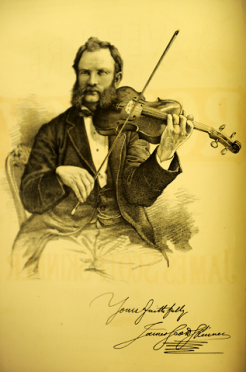Newly-discovered comp by a world-acclaimed Aberdeenshire musician and composer are set to be released in a new book as part of the Silver Cities Stories festival.
James Scott Skinner’s handwritten manuscripts – a group of 120 compositions – are thought to have been committed to paper in the 1890s.
They were donated by the Tarland farmer John Rogie and transcribed by the renowned fiddle player Paul Anderson.
Skinner was born in Arbeadie village, in Banchory in Aberdeenshire in 1843 on August 5. His father, William, had been a gardener, but started playing the fiddle after an accident where he lost three fingers on his left hand.
Alexander Forbes Skinner taught his younger brother the basics of violin, and he was playing at dances with local fiddler Peter Milne by the time he was eight years old.
The works will be included in a new book entitled The Aberdeen Collection: 250 Contemporary Scottish Tunes in Traditional Style, written by Helen Lynch and Carley Williams, both of Aberdeen University.
The publication will be released in conjunction with the twentieth birthday of the Scottish Culture & Traditions Association, which offers education to adults about traditional song and dance throughout Aberdeen.
Ms Lynch explained how the material came to be found.
She said: “Farmer John Rogie had been a fiddle pupil of Bob Pithie of Ballater, a retired policeman with a passion for Scottish fiddle music.
“The manuscripts were given to Pithie in payment for the restoration of a violin”.
Mr Scott Skinner’s compositions have a long-lasting legacy – he died in 1927 – and he is widely regarded as a trailblazer in his sphere.
Ms Lynch added: “He was a crucial figure in Scottish traditional music, and took the art of Scottish fiddle playing to the next level”.
The collection of works will be launched at a sell-out event on July 1 at the Douglas Hotel in Aberdeen, and will include a presentation as well as a number of performances, including one by Mr Anderson.
The book, published by Aberdeen University Press, will also contain new work from 97 musicians from the north-east, and can be purchased from www.scottishculture.org after the initial release.
